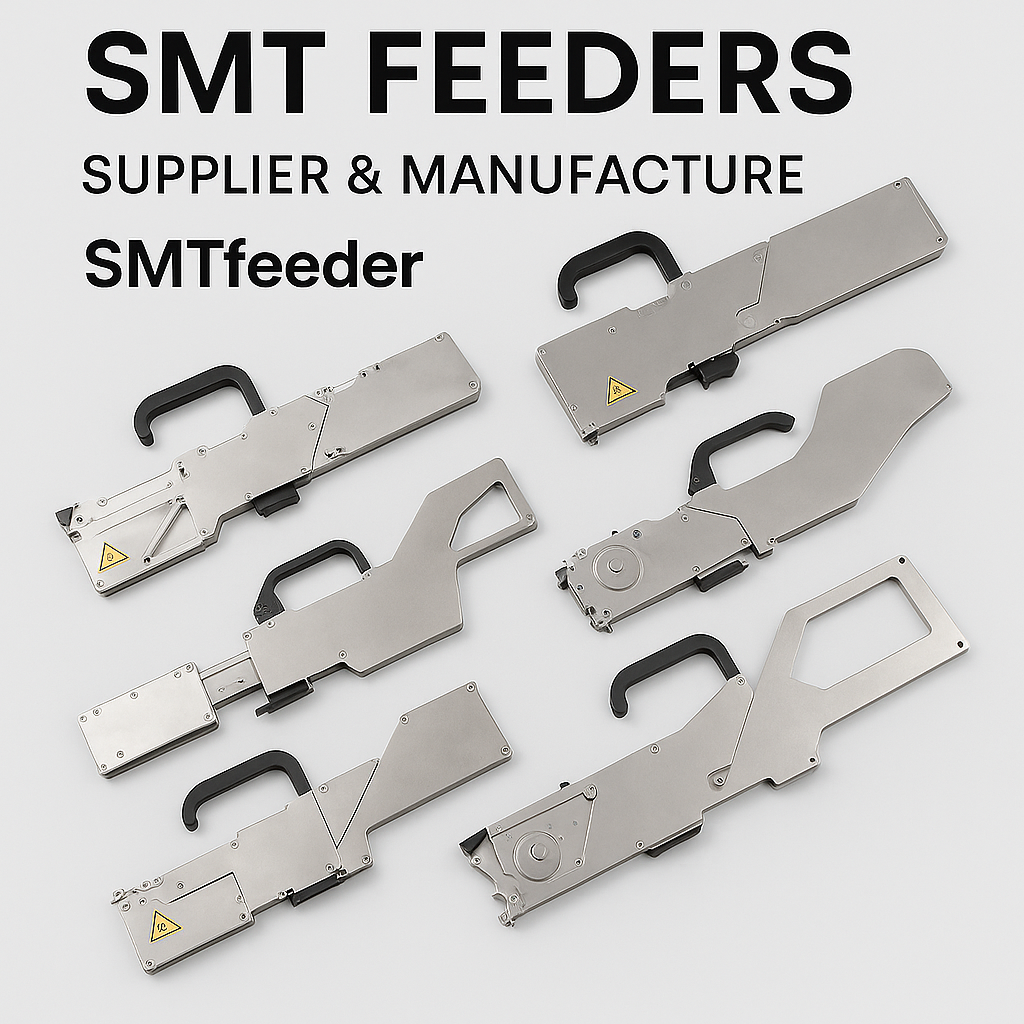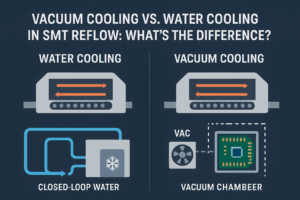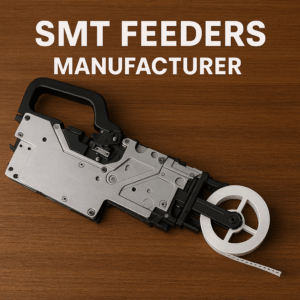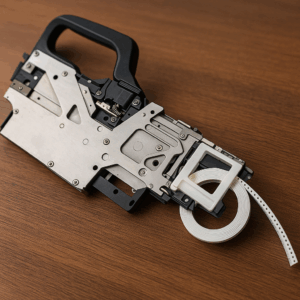SMT feeders are an important part of the electronics industry. They deliver tiny electronic components to pick-and-place machines that accurately position them on circuit boards.
Without good feeders, even the best machines can slow down, make errors, or prevent running. Feeders keep the line running smoothly, enhancing speed, accuracy, and average machine performance.
Let’s look at how first-rate feeders could make manufacturing quicker, improve quality, cut expenses, and decrease downtime all leading to better consequences in your business.
What are SMT Feeders and How does it work?
SMT feeders are tools used in electronics factories to supply tiny parts to pick-and-place machines. These machines place small digital components onto printed circuit forums (PCBs).
Feeders make sure every component is ready for the machine to choose up and place in the right spot. Without them, the complete process would slow down or stop.
Types of SMT Feeders
Different parts are packed in different ways, so there are several kinds of feeders to match them-
Tape Feeders- The most common type. Small parts are packed in a tape. The feeder moves the tape, removes the cover, and gets each part ready for the machine. Used for small parts like resistors and capacitors.citors.
Tray Feeders- Used for bigger or special-shaped parts. Components are kept in trays with small spaces. The machine picks each part from the tray.
Tube Feeders- Hold parts in long tubes. When one part is picked, the next slides down. Common for diodes and transistors.
Bulk Feeders- Used for small loose parts. The feeder shakes or moves them into place for picking. Best for high-volume, low-cost parts.
How SMT Feeders Work
Here’s how the process works step by step-
- The feeder holds a set of components (in tape, tray, tube, or bulk form).
- It moves the following element into the role.
- If it’s a tape feeder, it removes the cover tape.
- The pick-and-place machine selects the element and places it on the board in the proper spot.
This takes place very rapidly, sometimes thousands of times per minute. The smoother the feeder works, the faster and more accurate the entire manner is.
Benefits of Using SMT Feeders
High-quality SMT feeders make the production line faster, smoother, and more reliable. Here’s how they help-
Faster Production Throughput
Good feeders keep parts moving without delays. When machines usually have the elements they need, more circuit boards can be made in less time.
Improved Placement Accuracy & Repeatability
Quality feeders make sure every part is placed in the proper spot every time. This means fewer errors and better-quality products.
Reduced Downtime & Quicker Changeovers
Easy-to-use feeders are fast to load and change. That means machines spend less time stopped, so work keeps moving.
Lower Labor Costs & Easier Operation
Since good feeders run smoothly, workers don’t need to stop often to fix problems. This saves time and reduces extra labor.
Less Component Waste & Higher Yield
When feeders work properly, parts aren’t dropped or damaged. That helps save components and increases the number of good boards made.
Flexibility for High-Mix Production
Good feeders can handle many exclusive component sizes and brands. This makes it clean to replace merchandise or designs without slowing down.
Extended Equipment Life & Predictable Maintenance
Smooth feeding puts much less stress at the machines. This facilitates them remaining longer and requiring fewer upkeep.
Better ROI & Lower Total Cost of Ownership
With faster work, fewer errors and less wastage, high-quality feeders cost less in the long run and provide a better return on investment.
Choosing the Right SMT Feeder
Choosing the right SMT feeder helps your machines run faster and more smoothly. It also reduces mistakes and downtime. Here are some simple things to check before buying-
- Component type – Pick a feeder that matches how your parts are packed, tape, tray, or tube. The right match keeps parts moving easily.
- Machine compatibility – Make sure the feeder fits your pick-and-place machine, like Juki, Fuji, or Yamaha. This helps it work correctly without problems.
- Precision and durability – Choose feeders made from strong materials that work accurately. Good feeders last longer and help place parts correctly.
- Ease of maintenance – Go for feeders that are easy to clean and fix. This saves time and keeps your line running.
- Technical support – Buy from a SMT Feeders Supplier who can give quick help when needed. Good support keeps your machines working without delays.
Always choose a feeder that fits your work needs. The right one will help you make better products, faster and easier.
Maintenance Best Practices
Regular maintenance keeps feeders performing like new.
Daily/Weekly Checks-
- Clean dust and debris from tape paths
- Inspect for worn gears or bent parts
- Verify pickup alignment and tape advance accuracy
Offline Feeder Preparation-
- Preload reels and store feeders in clean, ESD-safe environments
- Avoid moisture buildup in sensitive components
- These small steps prevent errors, maintain precision, and extend feeder life.
Key Performance Metrics to Track
Keeping a watch on key overall performance numbers allows you to spot how properly your manufacturing line is working and in which you may enhance. Here are the primary ones to observe-
- Placements per Hour- Shows what number of components the machine can region in an hour. It allows a degree of ordinary speed.
- Pick Success Rate- Tells how regularly the device picks up components efficiently. A higher price means better accuracy and less mistakes.
- First-Pass Yield (FPY)- Shows the percentage of boards made properly the primary time, with no need for any rework. Higher FPY means higher pleasure.
- Feeder-Related Stoppages- Tracks how frequently the machine stops because of feeder problems. Fewer stoppages mean smoother manufacturing.
- OEE (Overall Equipment Performance)- Combines system velocity, uptime, and product pleasantness into one rating. It shows how nicely the complete line is running.
Checking these numbers frequently helps hold your manufacturing line fast, reliable, and working at its best.
Conclusion
SMT feeders are not just extra tools, they’re a big part of keeping your production line fast, accurate, and reliable. From faster throughout and reduced waste to improved flexibility and ROI, the benefits are clear.
If you want to improve your equipment’s potential, start by evaluating your feeder inventory and performance. Upgrading or maintaining your feeders could be the simplest way to enhance your line’s overall output and reliability.
Partnering with a trusted SMT Feeders Supplier or SMT Feeders Manufacture ensures you get durable, efficient, and precisely engineered feeders for long-term performance.
Regular cleaning, alignment checks, and proper reel storage help maintain performance and prevent misfeeds.
FAQs
Q1- What is the primary feature of an SMT feeder?
It components to choose-and-region machines as it should be for the duration of PCB meeting.
Q2- How do I select the right feeder for my gadget?
Match feeder type together with your thing packaging and make sure compatibility along with your pick-and-region model from a reliable SMT Feeders Manufacture.
Q3- Can feeders improve my line speed?
Yes, high-quality feeders minimize idle time and might appreciably boom placements consistent with hour.
Q4- What upkeep do SMT Feeders require?
Regular cleaning, alignment checks, and right reel storage help keep performance and prevent misfeeds.
Q5- Why ought to I purchase from a reliable SMT Feeders Supplier?
A trusted supplier offers durable products, technical support, and lengthy-time period cost to your production line.




